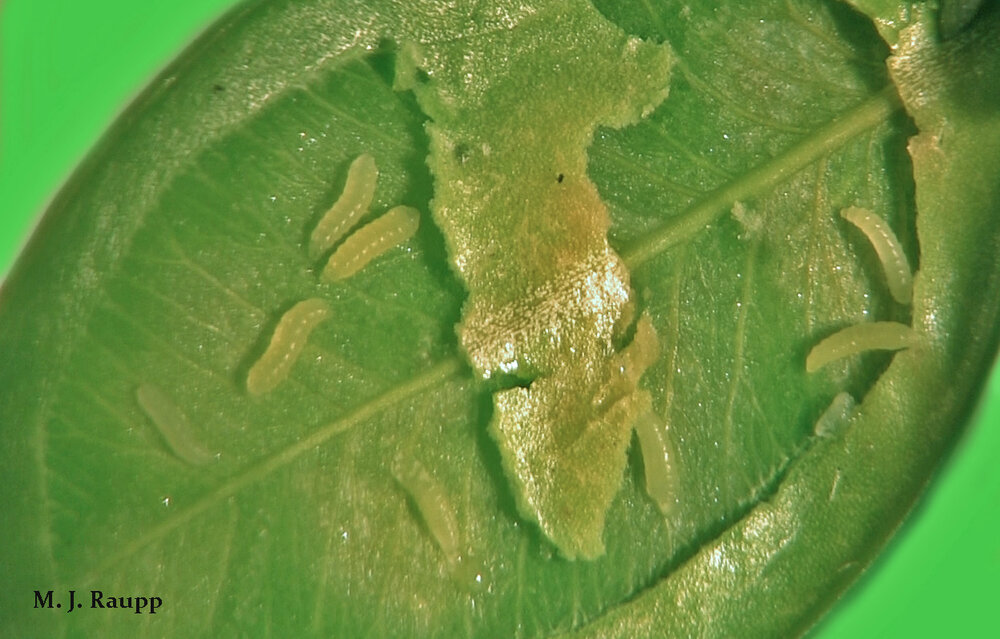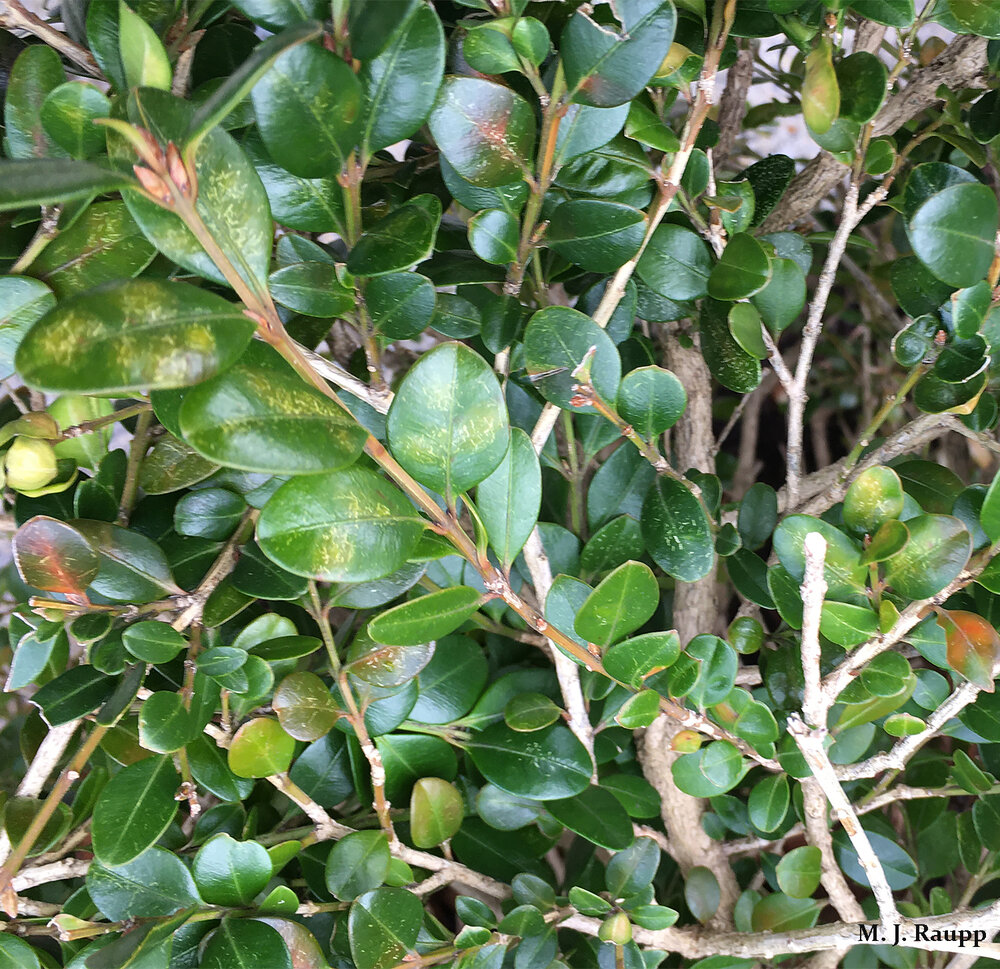A blue Christmas for boxwood: Boxwood leafminer, Monarthropalpus flavus

No ho ho ho for this boxwood leaf loaded with larvae of boxwood leafminer.

Glossy, dark green leaves of a healthy boxwood are conspicuously absent when infestations of boxwood leafminer give boxwoods a bad case of the blues.
One of the most interesting and charming woody plants in our landscapes is the boxwood. This evergreen shrub has been domesticated by gardeners since the time of the Roman Empire. Pliny wrote about the uses of boxwoods as a garden hedge and as a source of wood for the construction of musical instruments. Boxwoods are featured in the Holiday season in North America and Europe where their glossy, deep green leaves grace wreaths, centerpieces, and garlands in homes. This week on a trip to my favorite market, I passed a boxwood hedge that looked anything but charming. The usually deep green leaves of the boxwood were mottled yellow and orange and disfigured with bumps and blisters. The plants appeared to have a bad case of pox. What misfortune had befallen these noble shrubs? After plucking a few leaves from the embattled boxwoods, and carefully removing the lower surface of a leaf, I discovered several tiny, squirming, yellow maggots just beneath the surface. These were the larvae of the diabolical boxwood leafminer.
The boxwood’s blues began last spring in early May when adult boxwood leafminers emerged from leaves, exiting their leafy nursery. On the way out, the adult flies left behind the shed skin of their former pupal case. The papery skins, called exuviae, protrude from the bottom surface of the leaf for many days before dropping from the plant. Adult boxwood leafminers are delicate orange flies closely resembling mosquitoes. After mating, the female fly seeks the undersurface of a young boxwood leaf. Using a small drill-like structure at the tip of her abdomen, she punches a tiny hole in the surface and lays eggs in the soft tissue beneath. From these eggs tiny yellow boxwood leafminer larvae hatch. During summer and autumn, as the larvae grow, boxwood leaves produce small circles of cells surrounding developing larvae. These cells serve as a source of food for the maggots and produce abnormal swellings of the leaf, called galls. Development slows during the chilly months of winter and early spring, but by April, with the return of warmer temperatures, larvae grow rapidly as the boxwood ramps-up its activity. To escape the protected confines of its mine, the leafminer has a clever trick. Just before pupating, the maggot moves to the lower surface of the leaf and carefully removes almost all of the leaf tissue until only a thin layer is left. This layer forms a window that will be used by the pupa as an escape hatch. With a successful exit strategy in place, the larva pupates and in a few short weeks the pupa pushes through the window, enabling the adult fly to escape.
Peeling back the lower epidermis of a boxwood leaf reveals boxwood leafminer maggots nestled within, ready for a long winter’s nap. Fast forward to next spring, when larvae have completed development and pupated. As they emerge from leaves, shed pupal cases mark the exit sites of adult midges. With jazzy twisting motions, the rockin’ female drills into a tender new leaf to deposit eggs.
Managing leafminers
If you are troubled by boxwood leafminers, then a good, non-insecticidal way to thwart this uninvited guest is to plant varieties of boxwoods resistant to attack by this fiend. Years ago, we discovered that a variety of boxwood from the highlands of Macedonia was highly resistant to the boxwood leafminer. This variety is called Buxus sempervirens ‘Vardar Valley’. You can find it in several nurseries in the DMV. Here’s hoping your boxwoods don’t suffer holiday blues courtesy of the boxwood leafminer.
References
A wealth of information on boxwoods can be found in Lynn Batdorf’s wonderful “Boxwood Handbook”, used as a reference for this story. Information on resistant boxwood varieties came from the article entitled “Integrated approaches for managing the boxwood leafminer, Monarthropalpus flavus” by M.J. Raupp, I.H. Mars, and G. d’Eustachio, the abstract of which can be found at this link: https://www.actahort.org/members/showpdf?booknrarnr=630_6
This post appeared first on Bug of the Week